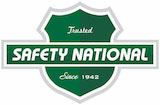Maryland is best poised to respond to a public health crisis, while Nevada and Alaska are least prepared, according to a national index released earlier this month.
The National Health Security Preparedness Index measures states’ readiness to respond to health disasters, including natural disasters, terrorism and disease outbreaks—think Zika or Ebola.
The index began in 2013 as a project by the U.S. Centers for Disease Control and Prevention, but is compiled annually now as a collaborative effort involving more than 30 organizations, funded by the Robert Wood Johnson Foundation.
By analyzing 140 measures—including the percentage of bridges in good or fair condition, flu vaccination rates and the number of pediatricians—the index calculates a composite score to determine health preparedness for the country as a whole, as well as individual scores for each state.
According to this year’s numbers, public health systems in the United States continue to improve overall. The country as a whole scored a 7.1 out of a possible 10, nearly a 3 percent improvement from last year and an almost 11 percent improvement since 2013, when the first index scores were released.








